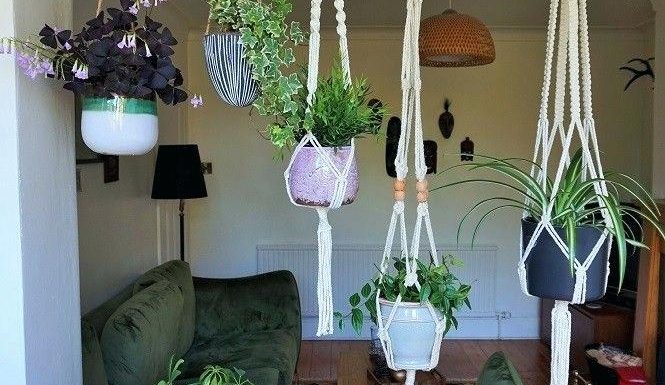Hanging plants bring charm, greenery, and a touch of elegance to indoor and outdoor spaces.
They add life to dull corners, beautify porches, and create a refreshing environment without taking up floor space. But while hanging plants are stunning to look at, they are often trickier to care for compared to plants in regular pots. The biggest challenge is watering them.
Because they’re suspended, the soil tends to dry out faster, water often drips onto the floor, and reaching them may be inconvenient. Improper watering can lead to wilting, root rot, or unhealthy growth.
Mastering the right watering techniques can make a significant difference in how lush and thriving your hanging plants look.
Here are six of the best ways to water hanging plants and tips to make the process easier and more effective.
1. Watering with a Long Spout Watering Can
One of the simplest and most effective methods is using a watering can with a long, narrow spout.
Hanging plants are usually positioned higher than your regular houseplants, so a traditional short-spout can often causes spills or prevents water from reaching the soil properly.
A long-spout watering can allows you to aim water directly at the base of the plant without wetting the foliage unnecessarily.
This helps reduce the risk of leaf diseases caused by constant moisture on the leaves.
The controlled stream from a narrow spout also prevents soil from splashing or being displaced. Many hanging baskets contain lightweight potting mixes that are prone to washing away if watered too quickly.
By watering slowly and evenly, you give the soil enough time to absorb the water instead of letting it run through.
It’s a good practice to water until you see some moisture draining from the bottom of the pot, which ensures the entire root ball has been hydrated.
This method works best for hanging plants indoors where precision is necessary to avoid making a mess on furniture or floors.
Keep a step stool nearby if your baskets are placed very high, as this allows you to reach them comfortably without straining.
2. Bottom Watering in a Sink or Tub
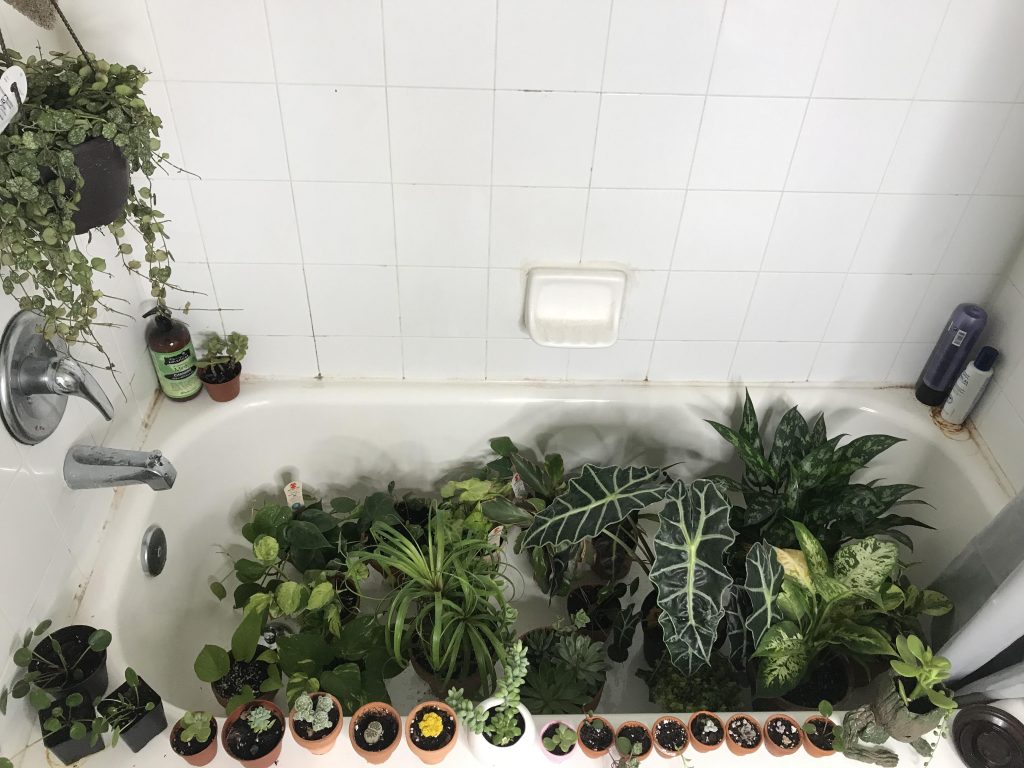
Hanging plants often have one major problem: water tends to run straight through the pot and drip everywhere.
To avoid this issue and ensure the roots get properly hydrated, bottom watering is an excellent method.
This involves taking the hanging plant down from its hook and placing the pot in a sink, bathtub, or large container filled with a few inches of water.
The soil then soaks up moisture from below through the drainage holes.
This technique is particularly beneficial for hanging plants that are pot-bound, meaning their roots take up much of the soil space.
In such cases, water poured from above often runs along the sides without reaching the center of the root ball.
By soaking from below, you allow the entire soil mass to hydrate evenly. Leave the pot to absorb water for about 20 to 30 minutes, then let it drain completely before hanging it back up.
While this method takes more effort because you have to remove and replace the plant each time, it ensures deeper watering and reduces the risk of dry spots inside the pot.
For heavy hanging baskets, consider using hooks that make it easier to unhook the plant for watering.
3. Using a Hose with a Gentle Spray Nozzle
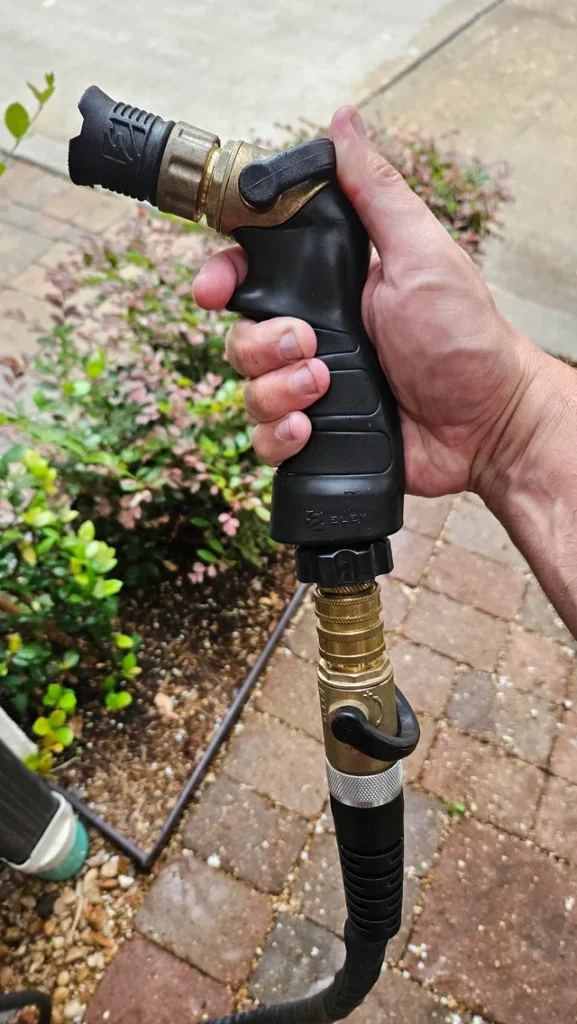
If your hanging plants are outdoors on a porch, balcony, or garden, a garden hose with a gentle spray nozzle makes watering quick and efficient.
Hanging plants outdoors are exposed to wind, sunlight, and heat, which can dry out their soil faster than indoor ones.
They often require daily watering during hot weather, so a hose becomes very handy.
The key is to use a nozzle with a soft spray setting rather than a strong jet of water. A heavy stream can wash out the soil or damage delicate leaves and flowers.
By using a gentle shower-like spray, you can cover the soil evenly without disturbing the plant.
Start by watering around the edges of the basket to encourage outward root growth, then move toward the center.
It’s best to water outdoor hanging plants early in the morning or late in the evening when temperatures are cooler.
This reduces water evaporation and gives the plant time to absorb moisture. During very hot days, you may need to check soil moisture more frequently to avoid stress.
4. Self Watering Hanging Baskets
Self-watering baskets are a great innovation for plant owners who struggle with keeping up a consistent watering schedule.
These baskets usually come with a built-in reservoir at the bottom that stores water.
Through capillary action, the soil pulls up water as the plant needs it, keeping the roots evenly moist.
This system is highly beneficial for busy individuals or those who travel often, as it reduces the need for daily watering.
It’s also a good way to prevent overwatering, since the plant only takes in the amount it requires.
Another advantage is that self-watering systems help keep floors and furniture clean, as they minimize dripping when the plant is re-hung after watering.
However, self-watering baskets are not suitable for every plant. Moisture-loving varieties such as ferns, ivy, or petunias thrive in them, but drought-tolerant plants like succulents may not do well in constantly moist soil.
If you choose self-watering baskets, it’s important to periodically flush the soil from above to wash out accumulated salts and minerals from fertilizers.
5. Misting and Humidity Support
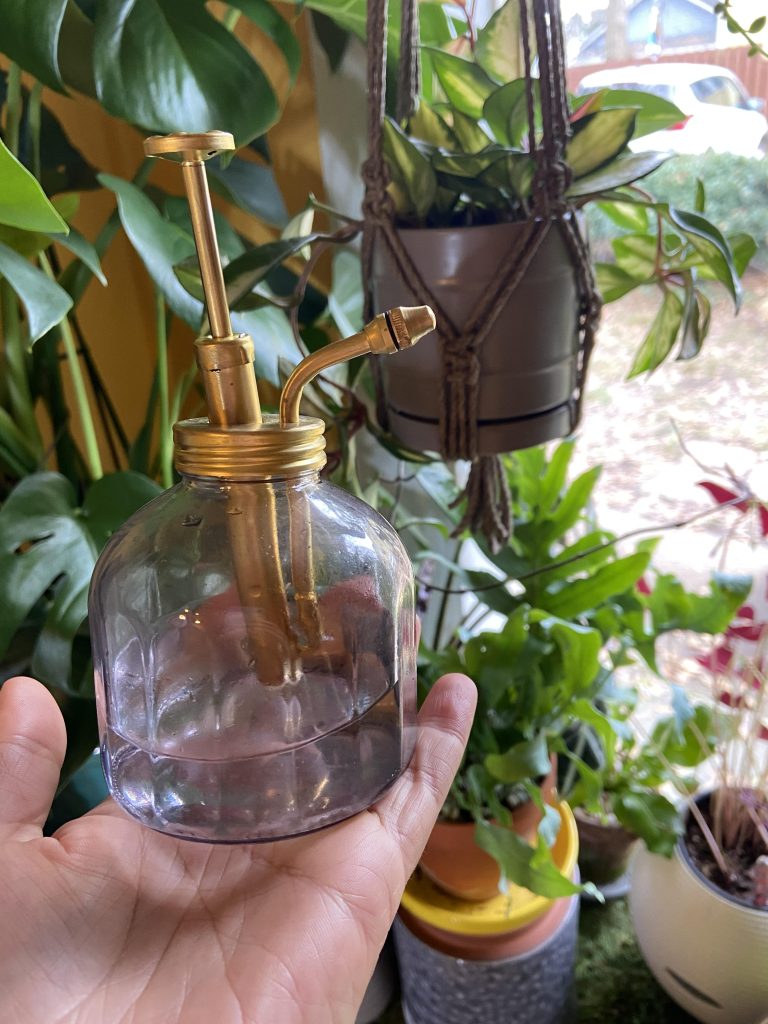
Many hanging plants, especially tropical varieties like Boston ferns, orchids, and philodendrons, enjoy not just soil moisture but also higher humidity around their leaves.
Since hanging plants are often closer to ceilings or exposed areas, they can dry out faster. Misting is a helpful way to provide extra hydration directly to the foliage and to maintain surrounding humidity.
Use a spray bottle with a fine mist and lightly mist the leaves in the morning so they dry throughout the day. This creates a microclimate around the plant, helping to prevent leaf browning and crisping.
For humidity-loving plants, misting is not a replacement for proper soil watering but a complementary technique.
Another way to increase humidity for indoor hanging plants is to place a tray of water with pebbles underneath, so as the water evaporates, it creates moisture in the air.
Grouping several plants together also helps maintain a higher humidity level, as plants naturally release moisture through transpiration.
6. Drip Irrigation Systems
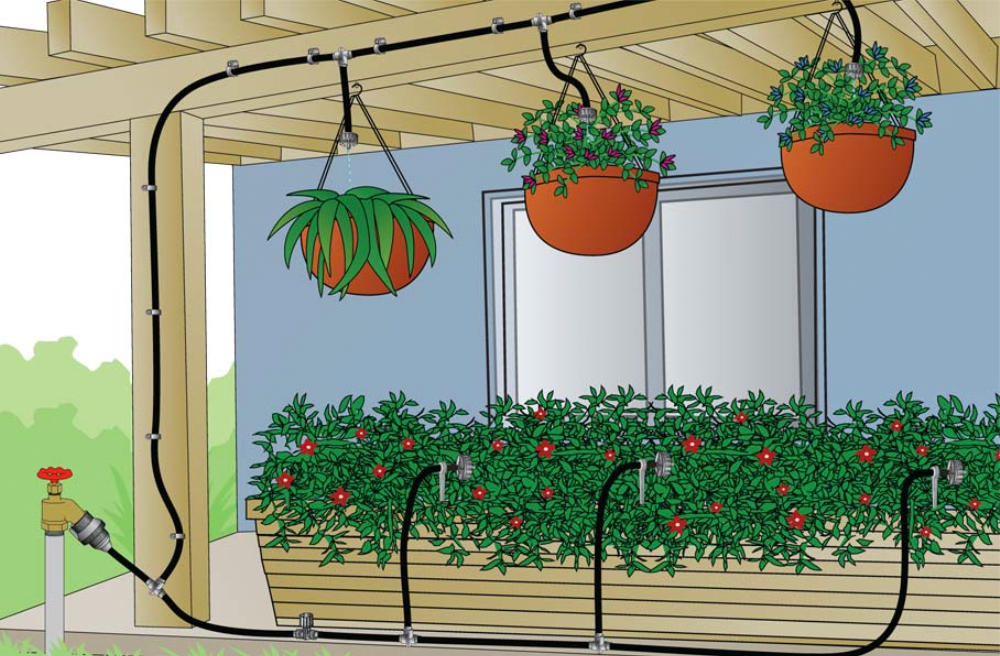
For plant lovers with multiple hanging baskets, drip irrigation is one of the most efficient solutions.
This system uses thin tubes connected to a water source, with small emitters placed directly into each pot.
The emitters release water slowly and consistently, ensuring the soil stays evenly moist without the need for daily manual watering.
Drip irrigation is especially useful for outdoor hanging plants that dry out quickly in the sun and wind.
By automating the process, you save time and ensure the plants are never neglected. Many systems can even be connected to timers, allowing you to schedule watering at the best times of day.
While drip systems require some initial setup, they pay off in convenience and reliability. They are also water-efficient, as the water goes directly into the soil without wasteful runoff.
For households with a large collection of hanging plants, this is a long-term solution that keeps maintenance simple.
Additional Tips for Watering Hanging Plants
No matter which watering method you choose, a few general rules will help keep hanging plants in their best condition.
First, always check soil moisture before watering. Hanging plants can dry out quickly, but overwatering is just as dangerous as underwatering. Insert your finger about an inch into the soil; if it feels dry, it’s time to water.
Second, use well-draining soil and pots with proper drainage holes. Hanging baskets without drainage can trap excess water, leading to root rot.
To retain some moisture while ensuring drainage, line baskets with coconut coir or moss.
Third, adjust your watering schedule depending on the season.
Plants need more water during warm, sunny months when they grow actively and less during the cooler winter months when growth slows.
Finally, always consider the type of plant you’re growing.
Some, like ferns, love consistent moisture, while others, like pothos, tolerate occasional drying between waterings. Knowing your plant’s natural habitat will guide you to the best watering rhythm.
Watering hanging plants requires more thought and technique than watering regular potted plants.
Their elevated position, limited soil, and exposure to air make them more prone to drying out, which means choosing the right method is crucial.
Whether you prefer the precision of a long-spout watering can, the deep hydration of bottom watering, or the convenience of self-watering baskets and drip irrigation systems, each technique has unique benefits.
Misting adds extra humidity for tropical varieties, while hoses with gentle sprays are excellent for outdoor care.
By combining these methods with close observation of your plants’ needs, you can ensure that your hanging baskets remain vibrant, healthy, and full of life year-round.
